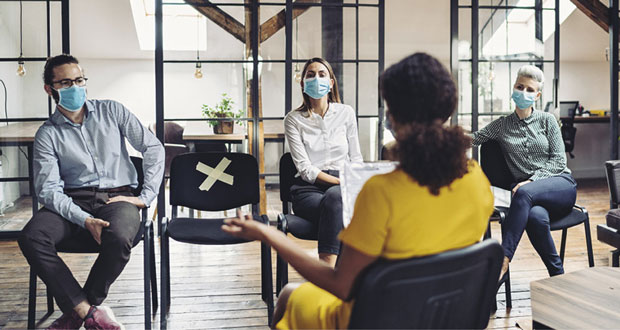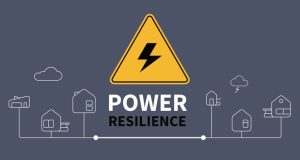Kate Gardner, Tutor & H&S Consultant for International Workplace describes how health and safety training for managers has evolved to meet post pandemic challenges
Having lived and worked through a challenging 18 months, managers could be forgiven for thinking that their responsibilities might be starting to ease. However, the new norm has brought with it a range of health and wellbeing challenges, including:
- Reassessing risks for a workforce with a blend of home-working, office working and somewhere in between.
- Understanding that mental health issues in this phase of the pandemic include anxieties about the return to the physical workplace.
- Enabling more fluid work arrangements in the office, including hot-desking (recognising that this raises ergonomic and hygiene issues).
- Understanding that Boards need strategies for resilience and business continuity. The ‘healthy hybrid’ will become the norm.
International Workplace’s IOSH Managing Safely course helps managers understand their key role in keeping their organisation’s workers safe and healthy, even when those people are not all necessarily in one place. This means establishing clear rules and procedures for those working in company buildings and ensuring that those working from home or elsewhere are set up with the appropriate equipment and are using it in the right way.
HOUSEKEEPING AND HYGIENE
Upon their return to the office, staff need to be aware of their responsibilities to keep everyone, including themselves, safe. Handwashing facilities are the start; encouraging good housekeeping, sensible hygiene practices when hot desking and clearing up after themselves should become the norm. Your organisation needs to have a clear policy on what is expected as regards face coverings in public areas, the use of hand sanitiser, and when it is appropriate and/or necessary to take a lateral flow COVID-19 test prior to coming into a workplace, attending a meeting, or joining an event. Managers need to be sensitive to the different demands of their employees, understanding that some people will be more comfortable attending the office and public areas than others.
MENTAL HEALTH AND WELLBEING
Clearly the COVID-19 pandemic has accelerated awareness of mental ill health in the workplace. However, the law has been clear for some time now that employers have a legal obligation under health and safety legislation to care for the mental, as well as the physical, safety of staff at work.
Under health and safety legislation, employers are required to carry out risk assessments and provide employees with relevant training and information on the risks they face, and the measures put in place to control these risks. This is where there is a potential problem with mental health as opposed to physical health. While many managers are aware of their obligations to look after the physical safety of their teams, many are unaware of their and their teams’ obligations to look after the mental health of their colleagues. This is partly due to the lack of awareness and training provided by employers to their managers. Many managers therefore may also genuinely believe it is not their responsibility. While it has been a positive move by employers to train mental health first aiders, doing so may have reinforced managers’ views that it’s not their problem. This is why employers need to revisit their obligations and update their approach to health and safety, providing training for all staff (but especially for managers), so they recognise it is their responsibility to look after mental health, as well as physical health and safety.
ERGONOMICS
One of the most important things that employers can do is help staff understand what a suitable home working environment looks like. Not everyone has the ability to have a dedicated home office but it is possible to make adjustments or adaptations to enable people to work in a supported and ergonomic way, whatever the workplace looks like. Having conversations with workers about the simple ways they can protect themselves from pain and discomfort means that wherever they work from, be it their home, a coffee shop or an agile work space, they will have the knowledge to work comfortably. The law doesn’t require employers to conduct home workstation assessments for employees working remotely temporarily. However, they should still offer advice. Employers should regularly contact workers to address whether improvements need making and deliver equipment if necessary.
To aid permanent homeworkers, employers must provide information on how to operate comfortably to avoid developing musculoskeletal conditions. Regularly communicating with staff members will help to prevent any long-term issues developing too. On top of this, employers must instruct staff to complete a homeworking risk assessment and a display screen equipment assessment. The company’s health and safety policy may also need adjusting to cover homeworking.
Training should never stand still – managers need to adapt to new ways of working and controlling the workplace environment.
Whilst COVID-19 can be considered to be a biological hazard, it affects the entire working environment, from ergonomics to organisational policy to physical working conditions. The IOSH Managing Safely course covers a broad range of health and safety subjects and ensures every manager and supervisor is aware of their responsibilities.
For more information visit www.internationalworkplace.com/iosh-training/managing-safely





